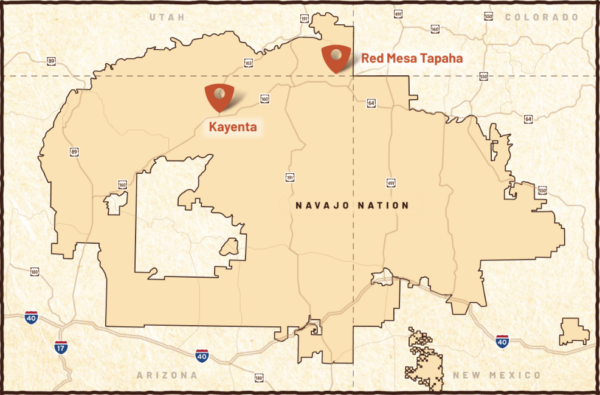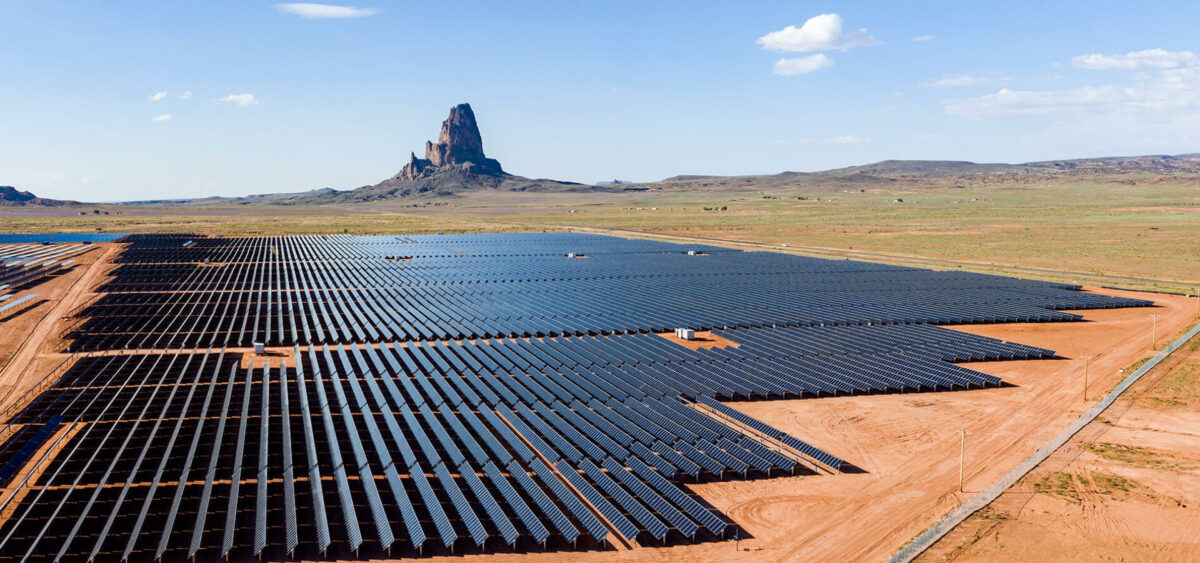Utility and power producer Avangrid, a part of the Iberdrola Group, announced a memorandum of understanding (MOU) with the Navajo Tribal Utility Authority (NTUA), a multi-utility enterprise operated by the Navajo Nation tribe, to explore new project development opportunities within the Navajo Nation of New Mexico and Arizona.
This partnership will allow the two parties to collaborate and study the feasibility of developing wind and solar projects, as well as battery storage solutions, to create new jobs, create economic development on the Navajo Nation, offset lost revenue on the Navajo Nation, and bring reliable, affordable, and renewable energy to power Navajo Nation businesses and residents.
“NTUA Generation has been working diligently to explore renewable energy development opportunities on the Navajo Nation with the promise of new jobs and clean green energy,” said NTUA General Manager Walter Haase. “We do believe the partnership we have with Avangrid will advance clean green energy development on the Navajo Nation and will help provide benefits to the communities served by NTUA,” Haase said.
As part of this partnership, Avangrid and the NTUA will explore projects that could benefit most from the IRA, which the utility said opens a meaningful emissions reductions path for Indian tribes through clean energy development.
“This partnership is transformative and exactly what the Inflation Reduction Act was intended to encourage,” said U.S. Senator Martin Heinrich (D- Albuquerque). “Avangrid and Navajo Nation’s commitment to explore opportunities together to build clean energy projects will create new revenue streams and lower energy costs for New Mexicans.”
Under the Inflation Reduction Act of 2022, in addition to the 30% solar investment tax credit and new 30% standalone storage ITC, the IRA offers tax credit “adders” for projects in low-to-moderate income communities, including on tribal authority land, for projects featuring American components and labor, and for batteries installed into repurposed fossil fuel power plants.
Developers told pv magazine USA if a tribal authority deploys an American-assembled storage project in a microgrid, the total cost savings can reach up to 70%. That incentive is shared by developer, off-take counter party, investors, and battery and parts distributors.

According to American Clean Power, New Mexico has 5.1 GW and Arizona has 3.55 GW of wind, solar and storage projects in operation, respectively, ranking the southwestern states 11th and 19th in the U.S. for renewable energy output.
The Navajo Tribal Utility Authority was founded in 1959 to address the absence of electric services on the 27,000-square-mile Navajo Nation land in the American southwest.
The NTUA has two utility-scale solar projects in operations and one in active development:
- Kayenta Solar Farm Phases I & II: The 55 MW two-staged project located in the El Capitan area of northern New Mexico supplies clean power to 28,500 homes and businesses across the Navajo Nation. The project sits on 365 acres and was assembled using JinkoSolar modules, Nextracker single-axis trackers and Sungrow inverters. When built in 2019 over two years with contractor SOLV Energy, about 87% of labor was performed by Navajo members. The project will generate an estimated $12.8 million in tax revenue over its lifetime to the Nation.
- Red Mesa Tapaha Solar Farm: The 70 MW utility-scale project is situated on 500 acres to the east of Kayenta Solar and became operational in 2022. The project powers 16 communities across state lines in Utah and three chapters of the Navajo Nation, providing 25 years of clean power and tax revenue for the tribal government. The facility provides stable electric rates to the Nation while connecting unserved families and enabling broadband internet access. Upon completion, Red Mesa will provide $11 million in wages for more than 250 employees.
- Cameron Solar Farm: In April 2021 the NTUA signed a long-term lease to construct the 200 MW Cameron Solar project, located east of the Grand Canyon National Park. The proposed project will supply power to the Salt River Project, an Arizona utility, as well as the Navajo Nation. The project is set to be built and operational by the end of 2023 and is part of Salt River’s goal of deploying 2,025 MW of solar projects by 2025 as its region shutters a coal power facility of the same size.
Approximately 15,000 families of the Navajo Nation do not have access to electricity, creating barriers to obtaining clean water, healthy food, healthcare, and using the internet. The Avangrid and NTUA partnership is expected to help more Diné/Navajo families gain access to low-cost and clean energy and provide workforce training opportunities that will support an even greater number of solar installations in the region.
This content is protected by copyright and may not be reused. If you want to cooperate with us and would like to reuse some of our content, please contact: editors@pv-magazine.com.









By submitting this form you agree to pv magazine using your data for the purposes of publishing your comment.
Your personal data will only be disclosed or otherwise transmitted to third parties for the purposes of spam filtering or if this is necessary for technical maintenance of the website. Any other transfer to third parties will not take place unless this is justified on the basis of applicable data protection regulations or if pv magazine is legally obliged to do so.
You may revoke this consent at any time with effect for the future, in which case your personal data will be deleted immediately. Otherwise, your data will be deleted if pv magazine has processed your request or the purpose of data storage is fulfilled.
Further information on data privacy can be found in our Data Protection Policy.